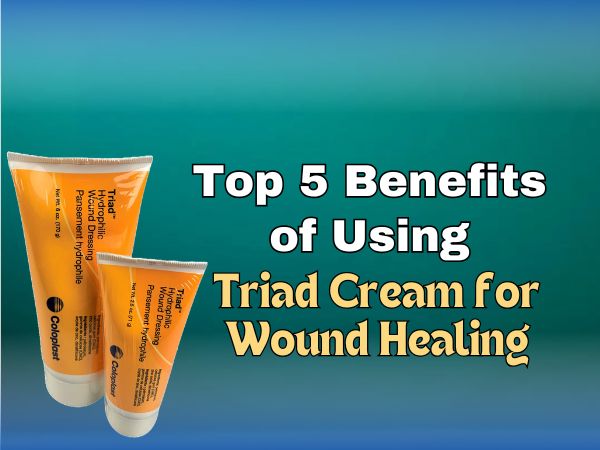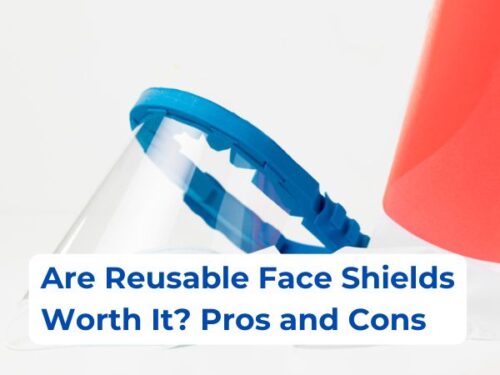Top 5 Benefits of Using Triad Cream for Wound Healing
Have you experienced a burn injury that later becomes infectious? If yes, you know how much pain and discomfort it can cause. But all of these issues can be prevented simply by applying a triad cream on first-degree burns. A triad cream is a wound care option that is not only suitable for burns but also for minor cuts and scrapes. But what is composition and what are some of the benefits associated with triad cream?
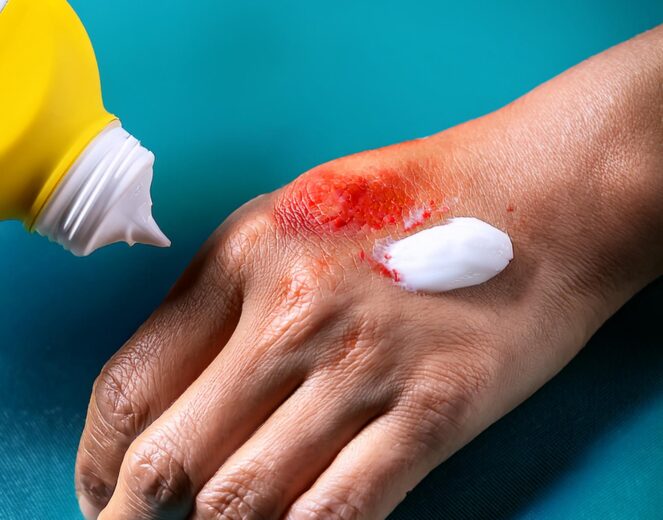
Triad cream can be applied on minor cuts and scrapes
In this article, let us go through the composition, top 5 benefits, as well as side effects of triad cream:
What is a Triad Cream?
A triad cream is a sterile, latex-free hydrophilic paste that is applied to the wounds to shorten the recovery time. It has zinc oxide as its active ingredient which is known for its wound healing properties.
Composition of Triad Cream
The triad cream is made up of the following ingredients:
Zinc Oxide
Triad cream is composed of zinc oxide which is known to promote healing. It provides the following benefits:
- Zinc oxide-based triad cream shortens the healing time by speeding up the recovery process.
- Zinc oxide helps in protecting the affected area from getting infected.
- The use of zinc oxide reduces the risk of the development of ulcers is also reduced.
- Zinc oxide also helps the body cells to divide and generate new cells to replace the broken skin tissue.
- It is also helpful in increasing the blood flow to the wounded area which then brings oxygen and nutrients to the site of injury.
Carboxymethyl Cellulose
Carboxymethyl cellulose or CMC is a semi-natural product derived from cellulose, a plant-based carbohydrate. It is added to the triad cream so that the product can adhere to the wet skin. It is a non-toxic additive that is compatible with the body tissues. CMC is known to create a moist wound environment and thus prevents it from getting dried.
Dimethicone
Dimethicone is a barrier-forming agent which helps the skin to retain its moisture. As a result, the skin remains moist as water loss is prevented. In addition, dimethicone also increases the smoothness of the skin tissue and therefore reverses the dry skin to its normal and healthy state.
Petrolatum
Petrolatum is a waxy product that is thick and jelly-like in appearance. It is often found as a base in skin care products. Vaseline is the pure form of petrolatum. In triad cream, petrolatum is added to increase the protection of the wounded area as well as to reduce skin irritation.
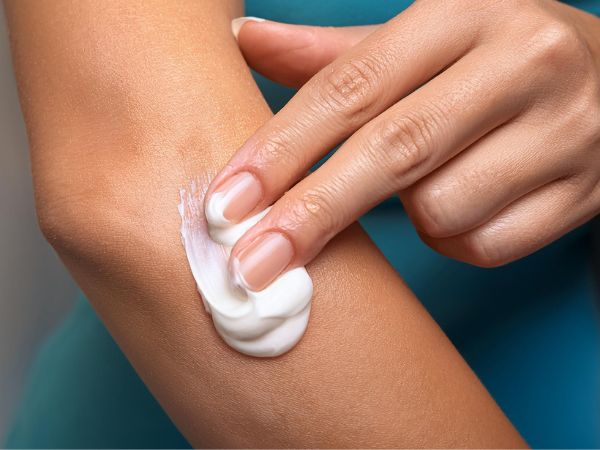
Triad cream is suitable to use on hard-to-dress areas
Indications for Triad Cream
The application of triad cream is often helpful in the management of the following conditions:
- Pressure ulcers
- Skin lesions
- Pressure injuries
- Venous stasis ulcer
- Dermal injuries
- Scrapes
- Superficial wounds
- First and second-degree burns
- Partial and full-thickness wounds
How to Apply Triad Cream?
When it comes to applying triad cream on the wounds, the process is easy and quick. In this regard, the following steps should be taken as a guideline:
- Triad cream should be applied to the wound directly from the tube. You can also apply the product with your hands after wearing a sterile glove.
- Make sure that the wound has been initially cleaned and the blood has been removed.
- Apply a small amount i.e. about a dime of the triad cream on the wound.
- Spread the cream to cover the wound as well as the surrounding area of about 2.5 centimeters (cm).
- Triad cream can be applied on its own or you can also add a secondary non-adhesive dressing onto it.
- Triad cream can also be applied with gauze. In this case, the triad cream has to be applied on the gauze which is then loosely tied on the wound.
- When it comes to re-applying the triad cream, there is no need to remove the previously applied paste. Rather, you can add to the first layer.
- Triad cream needs to be re-applied after 5 to 7 days of the first application. You can also apply the product more frequently depending upon the state of wound drainage.

Triad cream can be applied without a secondary dressing
Benefits of Triad Cream for Wound Healing
Triad cream is employed on different kinds of wounds where it absorbs the exudate as well as promotes the clearing of wound debris. Some of its advantages and benefits have been detailed as follows:
1. Dressing of Incontinence-Associated Broken Skin
When a patient has urinary or fecal incontinence issues, there is a higher risk of incontinence-associated dermatitis or IAD. In this condition, the skin appears to be broken and wounded. The area becomes painful and prone to infections.
In such conditions, the use of triad cream is ideal. When applied, the product immediately creates a layer of sterile layer on the wounds. This keeps the area protected from microbes and thus reduces the risk of infections. In addition, if the wound is exuding, the carboxymethyl cellulose keeps the zinc oxide-based hydrophilic paste intact on the skin.
As the skin is being healed, petrolatum and dimethicone give it a smooth texture and keep it moisturized. Triad cream can be employed once the incontinence-associated wounds start to appear or it can also be used as a prophylactic agent to prevent the wounds on the itchy surface.
2. Absorption of Exudate
In almost 50% of the cases, the wounds are in a state of maceration. This means that due to the prolonged exposure to the wound exudate, the skin of the wound itself as well as that of the surrounding areas starts to soften. As a result, a sensation of pain, itching, and burning is common.
As the condition worsens, a foul-smelling discharge starts to exudate. Redness as well as discoloration of the area is also prominent. As a treatment, triad cream can be applied. The zinc oxide will keep the area protected against infectious agents while the CMC performs the job of keeping the product stuck in the affected area.
3. Removal of Necrotic Tissue
In case of an injury or trauma on the skin, it is common for the body tissue to get a restricted supply of blood. As a result, the area remains deprived of oxygen and other essential nutrients. When this situation is prolonged, the cells in the affected tissue die thus generating a necrotic tissue.
This necrotic tissue acts as a barrier to the wound and prevents healing. The use of triad cream helps clear this necrotic tissue and increases the blood supply to the area so that nutrients, oxygen, as well as body cells can reach the site and start its recovery.
4. Promotion of Autolytic Debridement
When a wound is exuding, it becomes vulnerable to infections. This is because the microbes thrive in a moist environment. Moreover, the necrotic tissue is the food microbes need for survival and reproduction.
When the triad cream is employed on such a wound, it not only seals the area but also manages the exudate. In addition, the broken cells and tissues are also cleared. If the wound is associated with a physical injury, dirt or sand could also be present in the wound. Triad cream helps clear all of this and gives the damaged skin a clear environment to heal itself.
5. Optimal Wound Healing Environment
An optimal wound-healing environment is one in which all the wound debris has been cleared out, the skin is moist and in the process of recovery. However, this requires moisture which can keep the skin texture smooth and prevent it from drying which can lead to further damage.
The triad cream solves this problem by allowing the natural moisture of the skin to spread evenly. This moisture not only covers the wounded area but also its surrounding tissues. In addition, autolytic debridement is also promoted. This way, an optimal wound-healing environment is created.
6. Access to Irregular Wounds
Triad cream also provides the benefit of wound healing on injuries which are hard-to-dress either due to their location or traumatic state. As there is no need for a secondary dressing once the triad cream has been applied, wounds on the areas like the groin, gluteal cleft, coccyx, perineum, as well as buttocks can be tackled only by the application of the product. In addition, triad cream is also suitable for wounds on the hands, feet, and face.
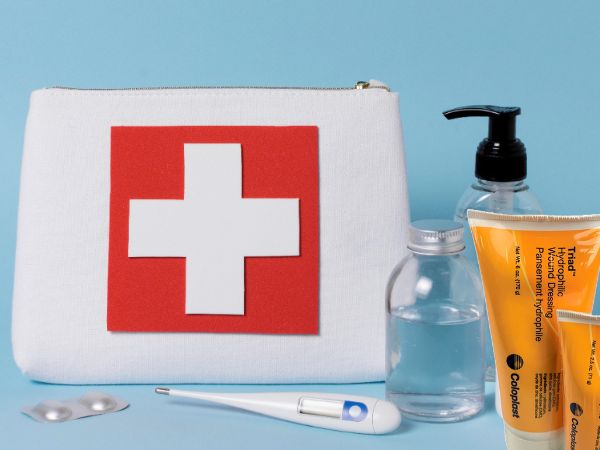
Triad cream should be kept in every first-aid kit
Overall, a triad cream is an ideal alternative to many other wound care products. Some other benefits of the product include:
- As triad cream is sterile, it does not cause infections. Rather, it prevents them.
- Triad cream can be applied on any part of the body, even on the hard-to-dress areas.
- Triad cream can adhere to wet or dry skin.
- A triad cream can absorb low to moderate exudate.
- It keeps the site of injury covered.
- The product provides a moist environment to the wound which then increases healing.
Side Effects of Triad Cream
Despite its numerous benefits, triad cream can cause some side effects which include the following:
- Itching
- Redness
- Stinging
Caution
It must be kept in mind that the triad cream is not suitable for every wound. Therefore, caution needs to be practiced in its application in the following wounds:
- Third-degree burns
- Infected wounds
- Wounds in which debridement is not indicated such as in the case of arterial wounds
- Triad cream is not suitable for use on swollen areas or hives.
- It should never be ingested as triad cream is for external use only.
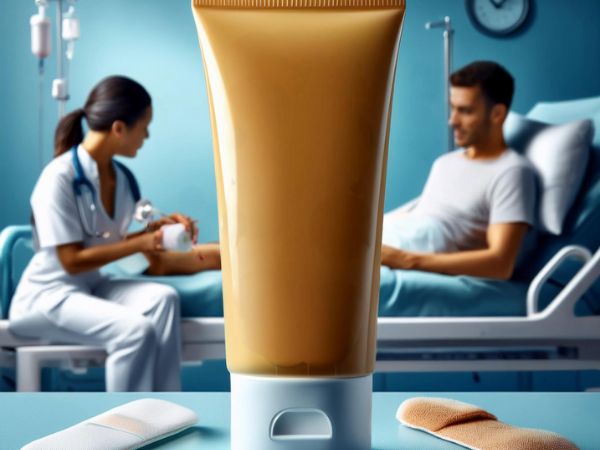
Triad cream is suitable to use with wound dressings
Triad Cream at Health Supply 770: Features and Specifications
While dealing with exuding wounds, many different types of high-quality solutions are available in the market. One of these is the triad cream. It is a zinc oxide-based hydrophilic paste that absorbs the exudate from moist wound beds.
It can also be employed along with secondary wound dressings to create an optimal wound-healing environment. The Coloplast triad cream is also available at Health Supply 770 and has been detailed below along with their features and purchase links:
Coloplast 1967 Triad Hydrophilic Wound Dressing Paste 6 oz
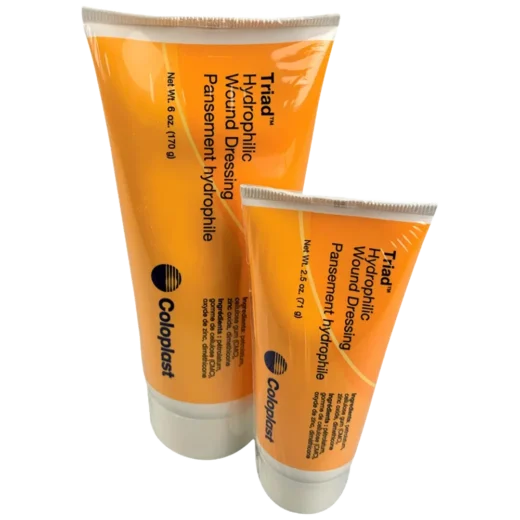
US$29.88
Product Details
Coloplast triad hydrophilic wound dressing paste is a wound care product that is employed on the wound bed to protect it from infections as well as facilitate healing. The product is made up of zinc oxide and is completely sterile. The product can be employed on varying wound etiologies.
Moreover, Coloplast wound care offers a solution to the problem of difficult-to-dress areas. It can also be employed on light to moderate levels of wound exudates. The triad cream provides an optimal wound-healing environment as it helps maintain a protective barrier around the wound.
Triad creams are also known to facilitate natural autolytic debridement which helps clear the wound exudates as well as the debris of the damaged tissues. In addition, Coloplast triad hydrophilic wound dressing paste is easy to apply on the wound as well as to remove if need be. Furthermore, the triad cream consistently stays in place and can be used with a suitable secondary dressing. The product is also free from natural rubber latex.
*Note: The prices mentioned in the article are taken from the Health Supply 770 website. These may vary over time.
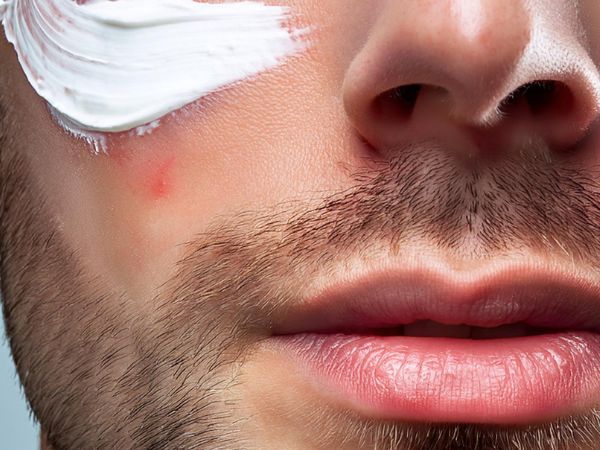
Facial wounds can also be treated with triad cream
The triad cream for wound healing mentioned in the above article, along with many other medical supplies, can be ordered from Health Supply 770, a reliable name when it comes to medical products. They have a 30-day money-back guarantee and provide your products to you in the shortest possible time. Click the link given in the article to check out the wide range of wound care supplies.
Bottom Line
Wound healing is a slow process often accompanied by pain, burning sensation, as well as an infection in some cases. However, if triad cream is applied to the wound, the damage is immediately contained and reversed. As a result, the worsening of the condition is prevented.
Triad cream is a zinc oxide-based wound care product that sticks to the wound for longer and creates a suitable environment for the skin to heal. Although the product is not for every wound, it is good to have it at home or in healthcare settings as a part of your first-aid kit.
For purchasing Coloplast triad cream, reliable vendors like Health Supply 770 should be approached. They ensure the provision of quality products along with satisfactory services.

PhD Scholar (Pharmaceutics), MPhil (Pharmaceutics), Pharm D, B. Sc.
Uzma Zafar is a dedicated and highly motivated pharmaceutical professional currently pursuing her PhD in Pharmaceutics at the Punjab University College of Pharmacy, University of the Punjab. With a comprehensive academic and research background, Uzma has consistently excelled in her studies, securing first division throughout her educational journey.
Uzma’s passion for the pharmaceutical field is evident from her active engagement during her Doctor of Pharmacy (Pharm.D) program, where she not only mastered industrial techniques and clinical case studies but also delved into marketing strategies and management skills.










